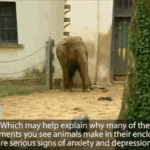11 THINGS YOU SHOULD KNOW BEFORE PLANNING YOUR NEXT TRIP TO THE ZOO
If you’re like most Americans, chances are you’ve visited a zoo. Maybe you’ve only gone to one on a school field trip, or maybe it’s one of your favorite places to go, but whatever the case, zoos are popular in this country.
To learn more about this and read the full list here.
(Source: Getty Images/ Imgur)
11 Things You Should Know Before Planning Your Next Trip To the Zoo
1. The Arabian oryx, golden lion tamarin, Puerto Rican parrot, Przewalski’s horse, black footed ferret, California condor, Wyoming toad, Panama golden frog and many other species only exist today because of captive breeding programs in zoos.
2. As the anthropogenic extinction crisis continues the list of species that only survive in captivity is only going to grow. Without zoos we might completely lose elephants, rhinos, gorillas, clouded leopards, tigers, pandas and most of the world’s frog species within our lifetime.
3. The research and husbandry practices developed in zoos is used to better rehabilitate and conserve wild animals. Much of the information we have about the dietary needs, behavior, and breeding processes of many species comes from zoos.
4. Most animals live significantly longer in captivity than in the wild. This is because animals in captivity are safe from predators (including human poachers) and receive scientifically formulated diets and the best veterinary care in the world.
5. Zoos are constantly working to improve the lives of the animals in their care through research and collaboration with other zoos. This means that zoos will only continue to get better.
6. Even if it conservation does not make up a huge portion of their budget zoos are still some of the biggest contributors to conservation. They have to spend big portions of their budget just to maintain the animals in their care (many of which are endangered) and to market the zoo so they have more money to put towards conservation and caring for their animals.
7. The portion of their budget officially designated to conservation does not include the cost of caring for endangered animals in the zoo which helps to maintain a varied gene pool in the case of extinction in the wild (which has tremendous conservation value).
8. The portion of their budget officially designated to conservation also does not include the cost of educational programs within the zoo. Educating people about endangered species makes them more likely to donate to conservation or make conservation-conscious decisions.
9. Most people don’t know that being an AZA accredited zoo means the zoo must take actions to become more environmentally sustainable. Some zoos are pioneering sustainability projects that may later be applied to other institutions.
10. Most of the examples cited to show how zoos are inherently evil are from old fashioned or non-accredited zoos (or may include very old examples or pictures taken out of context). Not all zoos are created equal; some are not good places and should either be shut down or seriously amend their enclosures and husbandry. But those bad zoos do not represent all (or most) zoos. Modern, accredited zoos have been steadily improving their enclosures and husbandry and will continue to become even better in the future.
11. People tend to not care about or protect things they have not directly experienced. Zoos serve an extremely important role in educating and making conservation issues personal. A person who has never seen a rhino or a golden lion tamarin or a mountain gorilla up close cannot fully grasp the enormity of what we stand to lose.

Just another WordPress site




